You may have seen this post from out TechTalk blog that discusses how to measure the phase angles you now know how to draw. We added it here to make sure everyone gets a chance to read this important information.
I’ve noticed that many students don’t seem to have experience with phase angle meters, and they can’t guess what a phase angle meter would measure in simple circuit. This knowledge is CRITICAL if you want to perform a protective relay meter test properly. Anyone can inject voltages and currents into a relay and record the results on a test sheet. A good relay tester can interpret those results and find MAJOR relay setting and installation problems with a simple test.
Let’s take a look at a simple DC circuit to start:
What would you measure if you connected the meter’s red (+) terminal to A, and the meter’s Volts (Volts) terminal to C as shown in the next drawing?
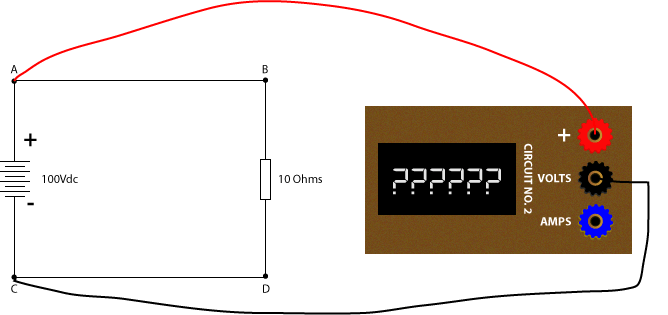
What if you connect (+) to B and (Volts) to D as shown in the next drawing?
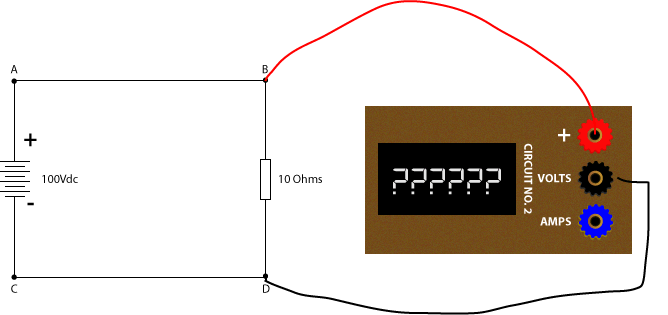
What would you measure if you connected (+) to D and (Volts) to B as shown in the next drawing?
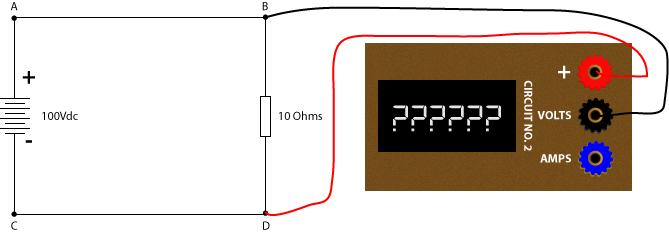
What if you removed the wire between A and B and connected (+) to A and (Amps) to B?
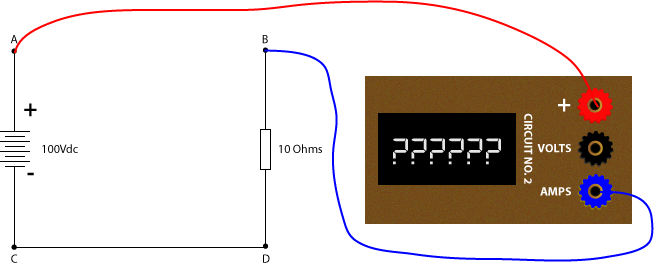
What if you replaced CD with (+) and (Amps)?
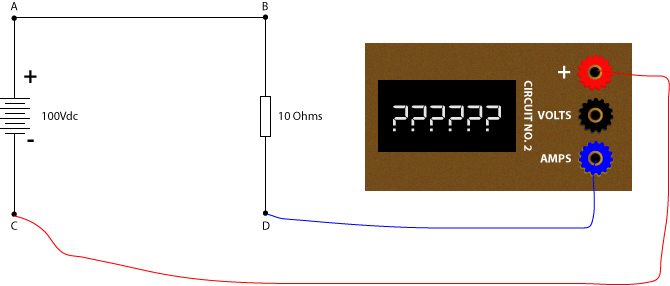
You should be able to see in our DC circuit that:
- the voltage sets the potential energy as well as the direction of current flow,
- the load (resistor) determines how much current will flow for a given voltage, and
- the measured polarity is dependent on the lead connections, not the circuit.
Let’s try a more complicated circuit:
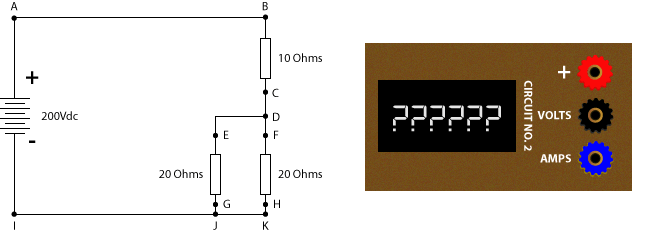
What would you measure across B (+) and K (Volts)?
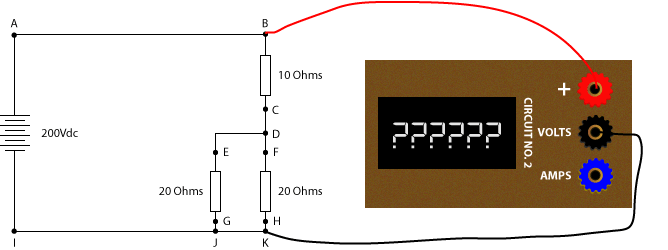
What about H (+) to F (Volts)?
You would measure -100V because:
- D-K has two 20 Ohm resistors in parallel, which provides an equivalent resistance of 10 Ohms.
- B-C is 10 Ohms and is in series with D-K, creating an equal voltage divider. There will be ½ voltage across D-K.
- D and F are the same point and K and H are also the same point; so there will be 100V across H-F.
- The meter leads are opposite to the battery; so the measured value will be -100V.
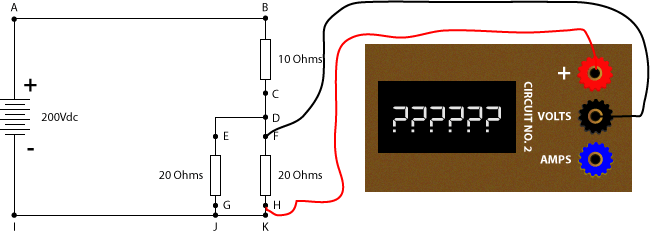
Can you fill in this chart?
| (+) Connection | (Volts) Connection | Measurement |
| A | I | |
| A | K | |
| A | D | |
| D | K | |
| G | D | |
| C | B | |
| K | A |
Want a hint?
It helps if you put polarity marks across each resistor.
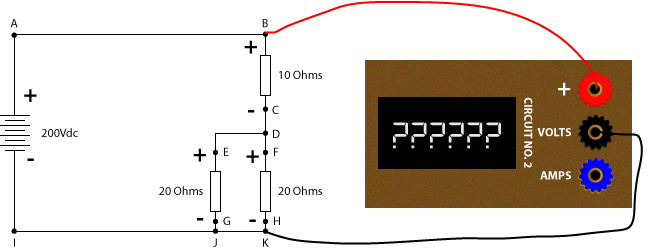
Now if the (+) lead is on the same side of a positive of the circuit and the (Volts) lead is connected to negative, the result will be positive.
Here are the answers
| (+) Connection | (Volts) Connection | Measurement |
| A | I | +200V |
| A | K | +200V |
| A | D | +100V |
| D | K | +100V |
| G | D | -100V |
| C | B | -100V |
| K | A | -200V |
Now let’s look at DC current
What would you measure if the meter replaced the wire between C (+) and D (Amps)?
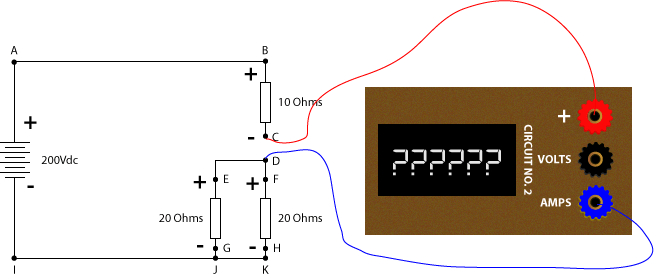
What would you measure if the meter replaced the wire between D (+) and F (Amps)?
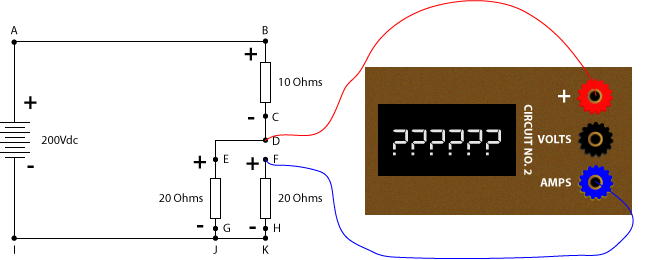
Can you fill in this chart?
| (+) Connection | (Amps) Connection | Measurement |
| A | B | |
| C | D | |
| D | E | |
| F | D | |
| K | H | |
| G | J | |
| I | J |
Here are the answers
| (+) Connection | (Volts) Connection | Measurement |
| A | B | +10A |
| C | D | +10A |
| D | E | +5A |
| F | D | -5A |
| K | H | -5A |
| G | J | +5A |
| I | J | -10A |
Now let’s look at a simple AC Circuit with a phase angle meter.
Phase angle meters measure magnitudes AND angles based on a reference angle.
Can you guess what the phase angle meter would measure in the following figure?
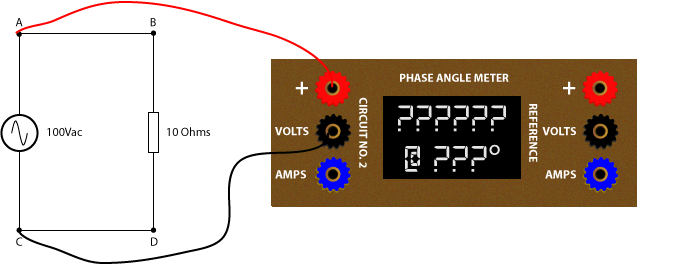
You can walk up to any part of a DC circuit and measure the voltage drop across (or current flow through) a device because there is only one direction in a DC system, using the metering definitions of positive to negative. (I know that physics defines it as negative to positive, but that’s not how our meters work.)
You can measure the magnitude of current and voltage in an AC system much like a DC circuit, but the AC waveform switches constantly from positive to negative with every cycle. This makes the “polarity” of the circuit much harder to define.
Our AC circuit has a starting point, but our phase angle meter has no way of recording that without a reference. We can measure the phase angle by adding a reference connection as shown below.
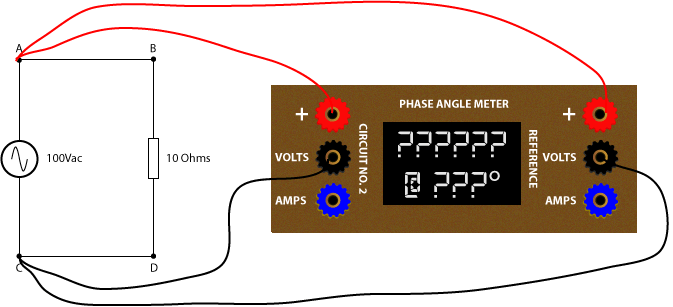
Now what would the phase angle meter measure?

What would the phase angle meter measure using the following figure?
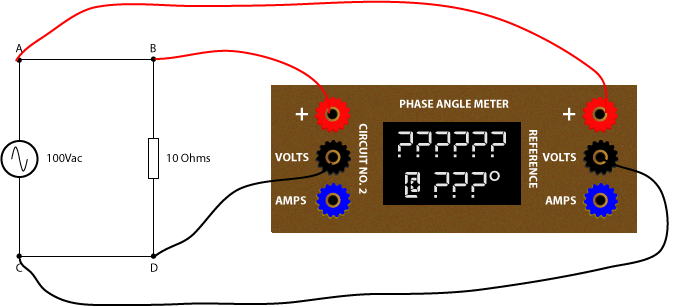
What would the phase angle meter measure now?
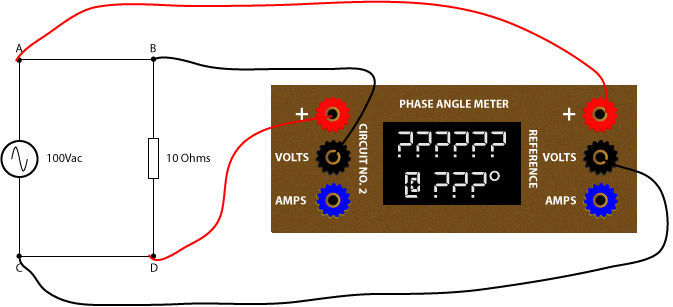
It is important to note that the CIRCUIT has not changed. The reason the last two angle measurements are different is caused by our CONNECTIONS, just like switching the leads on a DC meter.
One last easy one. What would the phase angle meter read now?
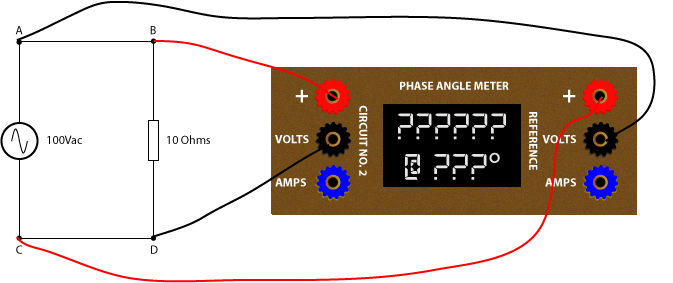
Now we can put a CT in the circuit to measure the current flowing through the resistor.
What would the phase angle meter measure in the next circuit?
The phase angle meter will measure 10A @ 0° because the polarity of the reference is the same as the measuring circuit.
We can redraw the circuit with polarity marks to better see how the current going into the CT primary polarity mark comes out the secondary polarity mark to match the polarity of the reference.
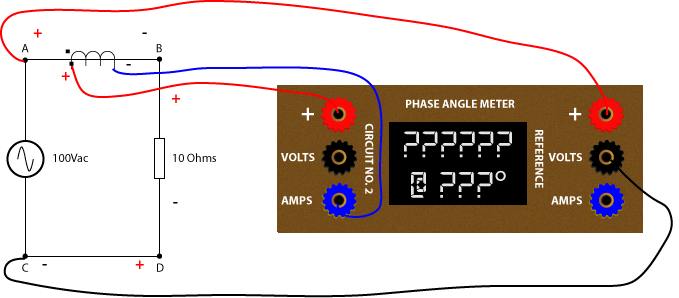
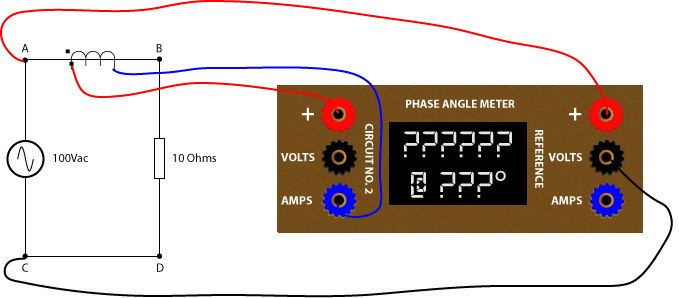
What would the phase angle meter measure in the next circuit?
The phase angle meter will still measure 10A @ 0° because the polarity of the reference is the same as the measuring circuit.
The dirty little secret of CTs is that polarity marks don’t matter once the CT installation matches the drawings. Direction of current flow is all about the reference in phase angle meters. In this case, our phase angle meter leads haven’t changed.
If we use the polarity marking from the previous drawing, we assume the current flows from A to B because our reference leads are connected with polarity on A and non-polarity on C. The current flows into the primary non-polarity mark of the CT; so current will flow out the non-polarity mark of the CT into the plus terminal, making the phase angle measurement 0°.
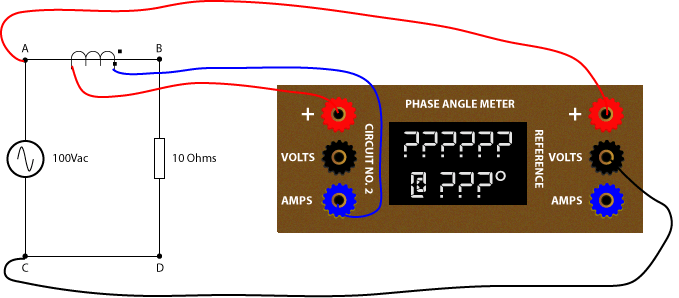
What would the phase angle meter measure in the next circuit?
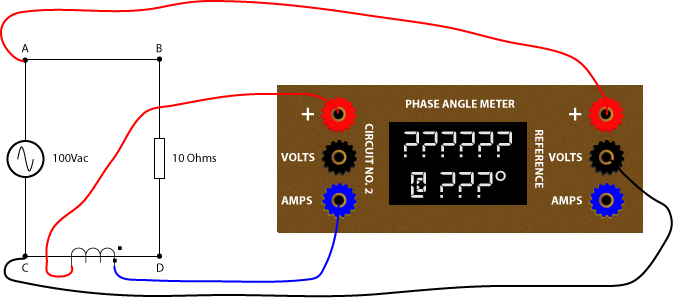
100% resistive circuits will always be at 0° or 180°.
Can you fill in this chart with voltage measurements with a phase angle meter?
| (+) Connection | (Volts) Connection | Measurement |
| A | I | |
| A | K | |
| A | D | |
| D | K | |
| G | D | |
| C | B | |
| K | A |
Here are the answers
| (+) Connection | (Volts) Connection | Measurement |
| A | I | 100V @ 0° |
| A | K | 100V @ 0° |
| A | D | 50V @ 0° |
| D | K | 50V @ 0° |
| G | D | 50V @ 180° |
| C | B | 50V @ 180° |
| K | A | 100V @ 180° |
Can you fill in this chart with current measurements with a phase angle meter?
Imagine the CT polarity is connected to the [+] terminal as shown in the AB example below and the [+] and [Amps] designations in the chart determine the direction of the CT.
| (+) Connection | (Amps) Connection | Measurement |
| A | B | |
| C | D | |
| D | E | |
| F | D | |
| K | H | |
| G | J | |
| I | J |
Here are the answers
| (+) Connection | (Volts) Connection | Measurement |
| A | B | 5A @ 0° |
| C | D | 5A @ 0° |
| D | E | 2.5A @ 0° |
| F | D | 2.5A @ 180° |
| K | H | 2.5A @ 180° |
| G | J | 2.5A @ 0° |
| I | J | 5A @ 180° |
What happens if we connect our phase angle meter to non-resistive circuits?
What voltage would you measure with a 100% capacitive circuit as shown in the next figure?
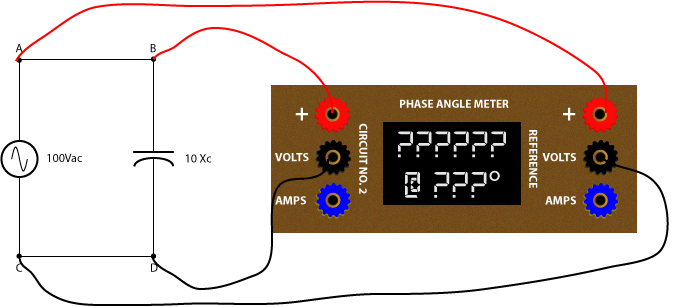
What current would you measure with a 100% capacitive circuit as shown in the next figure?
You would measure 10A @ 90° lead because the capacitive current will lead the voltage by 90°.
Notice I didn’t specify +90° or -90°? That’s because different devices can have different phase angle designations for the same position. The best way to communicate phasor information accurately is to use “lead” and “lag” designations instead of absolute references.
We cover this topic in our Phasor Drawings for Relay Testers Online Course.
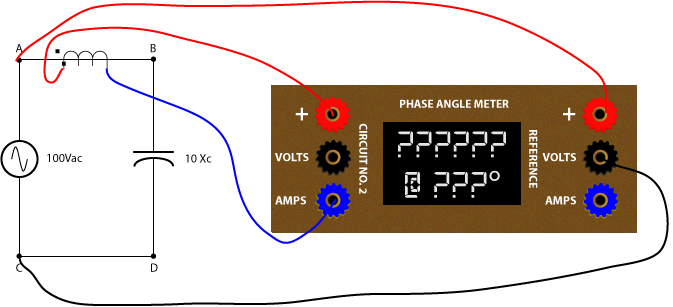
What would the phase angle meter measure in the next circuit with 100% pure inductance?
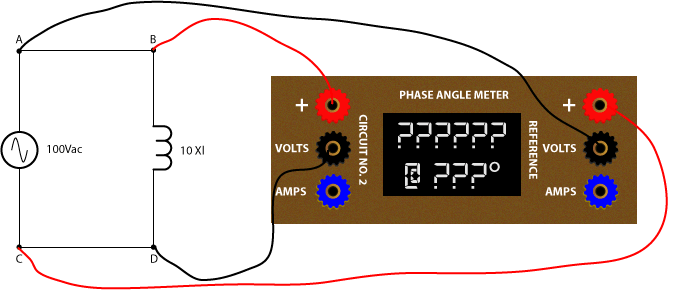
What current would you measure with a 100% inductive circuit as shown in the next figure?
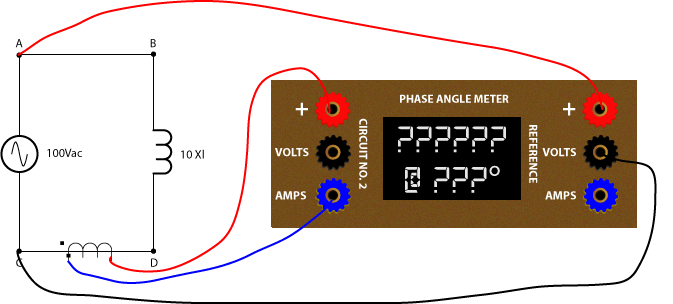
You should be able to see by now how important the REFERENCE of your phase angle meter is. Remember, every device that measures phase angles MUST have a reference, and that reference may not be what you think it is. Some phase angle meters use whatever they are plugged into as the reference. Some use whatever is connected to V1, Van, or Vab. Some use whatever is connected to I1 or Ia. If you don’t know the reference, you can’t verify that your measurements are correct.
Also remember that the system determines the voltage magnitude and angle and the load determines the current and current angle. There is no such thing as a purely resistive, capacitive, or inductive loads. This means that you should never apply current at 0°, 90° lag, or 90° lead because your relay or meter will never see these values in the real world. Always try to simulate realistic conditions whenever possible.
You now have the foundation necessary to understand what happens during a meter test. Try to figure out what you are supposed to measure before you perform your next meter test. You can get some help with our Finding the Direction in Directional Overcurrent Relays post before we cover meter testing in a future post.

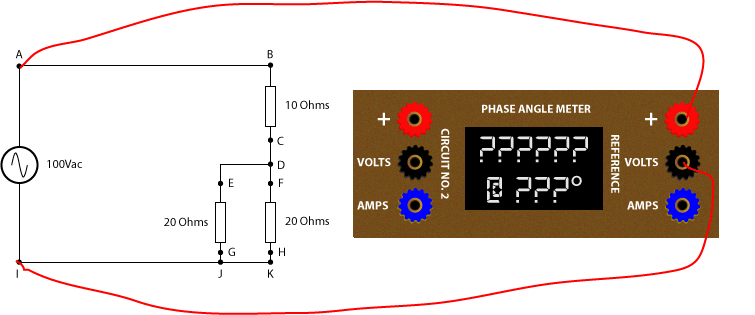
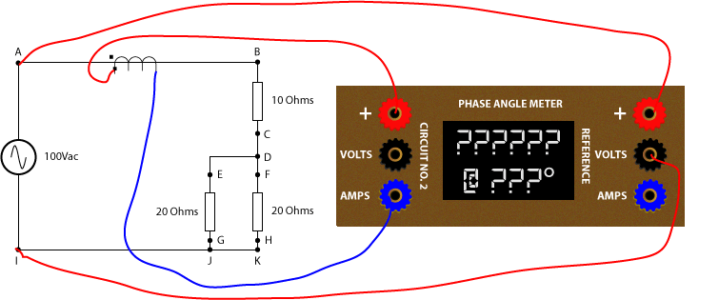
It might be worth a mention that CTs are, by nature, a little bit inductive, and current measurements tend to lag voltage just a little bit. Lag varies by manufacturer.
2nd thought: CT saturation. I found this guide to be quite helpful:
https://cms-cdn.selinc.com/assets/Literature/Publications/Technical%20Papers/6811_BeyondKneePoint_AH_20200501_Web.pdf?v=20200504-195517
There is no d5 connection
I don’t understand what you mean. Can you explain with more detail?